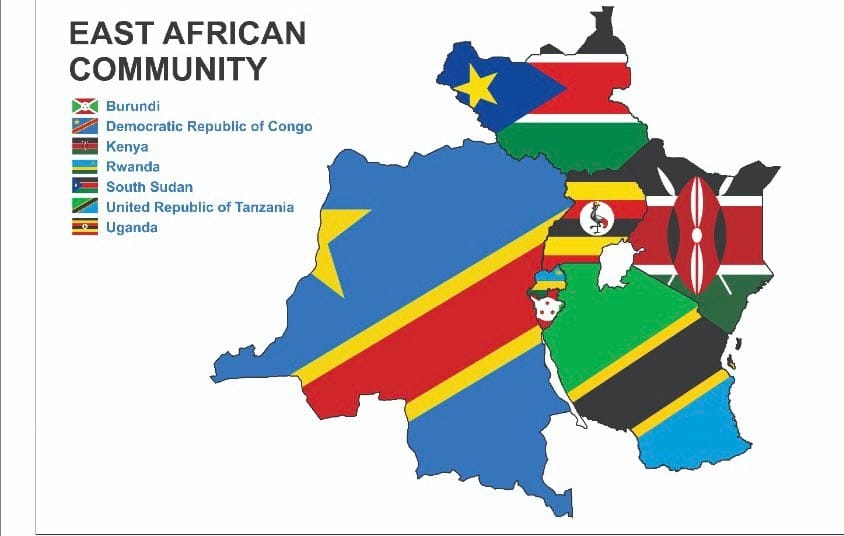Imagine a situation where your child is born and suffers from malnutrition due to a lack of necessary vitamins.
And during this situation, you get to realise that this is being caused by gaps in their food systems.
Malnutrition occurs when there is a mismatch between the nutrients your body requires and what it receives.
This can involve either a deficiency (undernutrition) or an excess (overnutrition).
You may be malnourished due to insufficient calorie intake or a specific deficiency in protein, vitamins, or minerals. Alternatively, malnutrition can result from consuming more calories than your body can properly use.
What malnutrition does to your body
According to the online website Cleveland Clinic, during malnutrition, the body undergoes significant physical and functional changes as it struggles to maintain essential processes.
In cases of macronutrient undernutrition (protein-energy undernutrition), the body lacks sufficient energy to function properly and begins to break down its own tissues for survival.
Initially, fat stores are depleted, followed by muscle tissue, skin, hair, and nails. This process leads to visible signs of emaciation, especially in individuals with severe protein-energy malnutrition. Children may experience stunted growth and developmental delays.
Cleveland Clinic also says one of the first systems affected is the immune system, which becomes compromised, leaving undernourished individuals more susceptible to infections and illness. Recovery from wounds slows, and healing is delayed.
The cardiovascular system also suffers, with a reduction in heart rate, blood pressure, and body temperature. As a result, individuals may feel weak, faint, and apathetic, often losing their appetite as parts of the digestive system begin to atrophy.
Micronutrient deficiencies often accompany macronutrient undernutrition, as a lack of overall calories also limits essential vitamins and minerals.
Severe malnutrition-related conditions, such as marasmus and kwashiorkor, can stem from specific vitamin deficiencies. For instance, vitamin A deficiency can lead to vision problems, while insufficient vitamin D can weaken bones.
In some cases, people may consume an excessive number of calories but lack essential vitamins and minerals.
These individuals might appear overweight or even obese due to macronutrient overnutrition but still suffer from conditions like anaemia, with symptoms such as weakness, faintness, and fatigue.
Cleveland Clinic finaly says Overnutrition can also lead to metabolic syndrome, manifesting as insulin resistance, high blood pressure, and other related health issues.
The remedies
Well, according to a report dubbed the ‘Goalkeepers 2024’ by Melinda and Bill Gates, it notes that if nations can repair these gaps, then they will be able to deliver the right macro- and micronutrients to as much of the population as possible.
The report, which was launched on the sidelines of UNGA in New York, focused on four countries; Brazil, India, Kenya, Rwanda.
“Every single person on the planet needs to eat a healthy, nutritious diet every day. For these countries, building a more nutritious food system produces a double benefit. It lowers the malnutrition rate, improving health outcomes,” the report reads.
The report further highlighted four solutions that these countries can put in place to ensure that cases of malnutrition are dealt with.
Ensuring more productive cows and safer milk that does not spoil
For people around the world, “drink your milk” has long been an advice to many people across populations.
Milk is a nutrient-rich food that addresses many of the nutritional deficits children face, including calcium, vitamins (including A and B12), protein, and healthy fats.
However, the report indicates that producing enough of it, ensuring it is affordable, and preventing it from spoiling remain a challenge in low-income regions.
Roughly 80 percent of the dairy cows in Kenya produce 2 litres of milk per day. But that’s changing, the report notes.
The report indicates that new agricultural technologies are being developed to increase the amount of milk these cows produce.
“Some technologies use DNA and data to help farmers select cows that give birth to more productive offspring, including more female calves. Others help farmers produce more high-quality forage or repurpose crop waste,” it read.
As a result, an increasing number of Kenyan cows are now producing 6 to 10 times more milk than before.
“That’s more milk to drink at home and more income for dairy farmers and vendors, most of whom are women. It’s also better health for children,” it read.
A new analysis from the International Food Policy Research Institute also showed that improving dairy productivity and consumption in just five countries—Ethiopia, India, Kenya, Nigeria, and Tanzania—could prevent as many as 109 million cases of childhood stunting by 2050.
“And training is an essential part that helps dairy farmers and market sellers to learn and follow best practices for safe storage and handling, so their customers have access to milk that’s not only full of nutrients but also free of pathogens,” the report stated.
A dairy farmer in Maili Nne, Kenya, Colleta Kemboi, says she leveraged new skills to care for her cows, expand her business, and provide for her family.
“My husband, Daniel, and I started dairy farming 15 years ago, with just two cows. When we started our business, it was hard to find customers. Sometimes our milk spoiled, and the customers we did have would complain,” she says.
But after she was trained, she learnt about how to improve hygiene across the dairy farm.
“And I learned that the containers used to collect the milk should be very clean, not reused from cooking— something I have taught our customers as well. Since then, we have not had any complaints about spoilage,” she says.
“The milk we produce, about 110 litres per day, is high quality. And that has helped us recruit new customers because once one of them buys our milk, he goes and tells others.”
Fortifying the global pantry against micronutrient deficiencies
Apart from just addressing the milk issue, the report indicates that another promising innovation is found in pantries all over the world.
Large-scale food fortification is old technology— but the world is unlocking new ways of using it to increase micronutrients in the food staples of low-income countries to create resilience for vulnerable families.
“After all, micronutrient deficiencies have an outsized impact on health. For example, vitamin A deficiencies are the leading cause of childhood blindness, while folate deficiencies are the leading cause of neural tube defects,” the report notes.
The report indicates that over the past 20 years, the percentage of households using iodized salt has increased from less than 20% to nearly 90%.
“Leveraging that success, Ethiopia is now exploring adding another critical nutrient, folic acid, to iodized salt. They are testing a way to produce this “double-fortified” salt nearly as cheaply as iodized salt— without having to build new factories,” it said.
It note that this approach holds the potential to dramatically reduce devastating birth outcomes, including nearly eliminating three-quarters of all deaths and stillbirths due to neural tube defects.
Expanding access to better prenatal vitamins
According to the report, Healthy diets are crucial for good nutrition but in different stages of life with different needs, they’re not always sufficient.
“Doctors know that mothers need extra nourishment during pregnancy and the critical days that follow to stay healthy and give their children the best start in life,” it says.
It notes that these increased needs make it difficult for pregnant women all over the world to consume the full range of necessary nutrients, especially in countries where healthy foods are out of budget or out of reach.
“One solution is the United Nations International Multiple Micronutrient Antenatal Preparation Multiple Micronutrient Supplements—the world’s most complete prenatal vitamin,” it says.
This supplement contains 15 vitamins and minerals proven to significantly reduce the risk of adverse birth outcomes.
“It is more effective and powerful than the iron and folic acid supplements that many women typically receive in low- and middle-income countries,” it says.
“ If all low- and middle-income countries switched to MMS, which costs only $2.60 for an entire pregnancy, almost half a million lives would be saved and 25 million babies would have improved birth outcomes by 2040.”
The Child Nutrition Fund
According to the report, although all these interventions will on work with resources and extensible plans for implementation behind them.
The Fund is designed to bring these innovative solutions to life and transform the way the world addresses child malnutrition.
The Child Nutrition Fund provides solutions to all three of these problems, in one place.
“We know it will be effective, because we’ve already seen these financing mechanisms in action—the Global Fund to Fight AIDS, Tuberculosis, and Malaria is a great example,” the report read,
The Fund which was launched by Bill & Melinda Gates Foundation in partnership with UNICEF, has seen the interventions of the Global Fund funded and deployed and has since saved nearly 60 million lives.
“Now, the Child Nutrition Fund is using a similar approach to attack child malnutrition, head-on, in partnership with countries around the world,” the report said.
Director of Child Nutrition and development, UNICEF Víctor Aguayo, says the Child Nutrition Fund could be a game changer.
“It holds the potential to address the child malnutrition crisis and transform philanthropy for maternal and child nutrition,” he says.
“Historically, the world of maternal and child nutrition has been overly reliant on the generosity of global donors. This strategy has created a boom to address some nutrition challenges but has also left critical areas of work inevitably neglected,”
Aguayo says matters, particularly those related to the early prevention of malnutrition among the most vulnerable children, have been ignored.
“Simply put, we have long needed a different approach to accelerate our response to the global child malnutrition crisis and a way to fund global maternal and child nutrition efforts sustainably at scale,” he says.
















